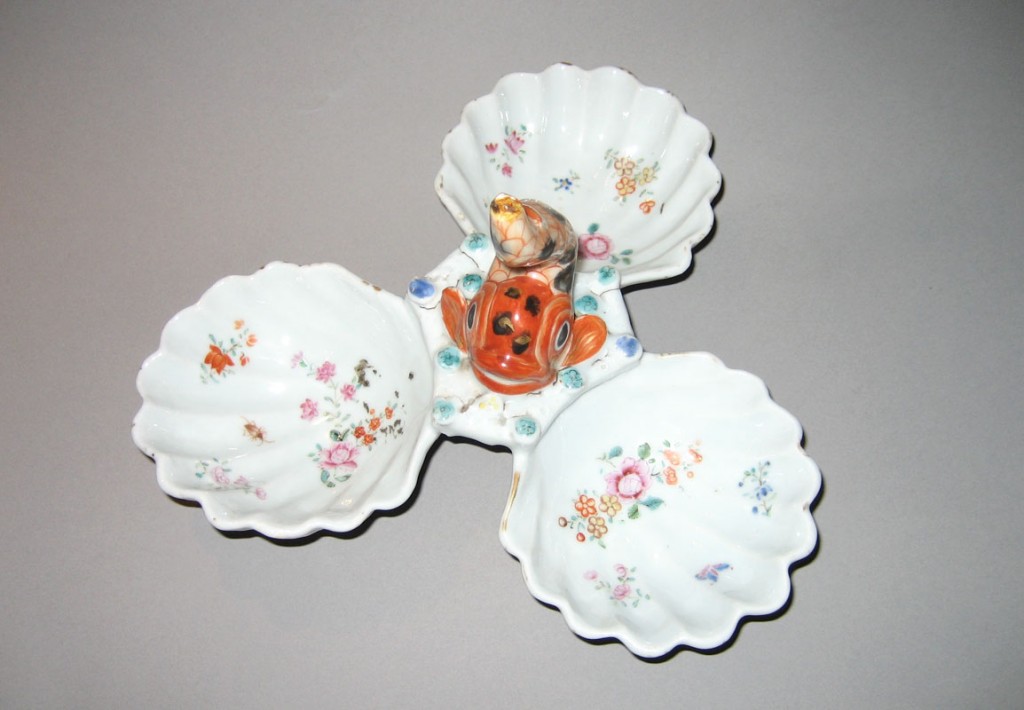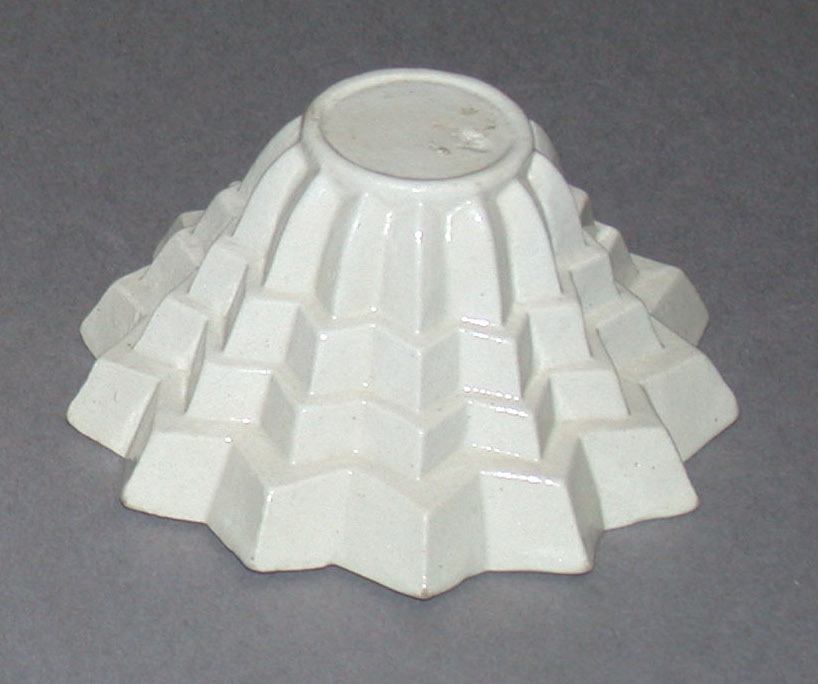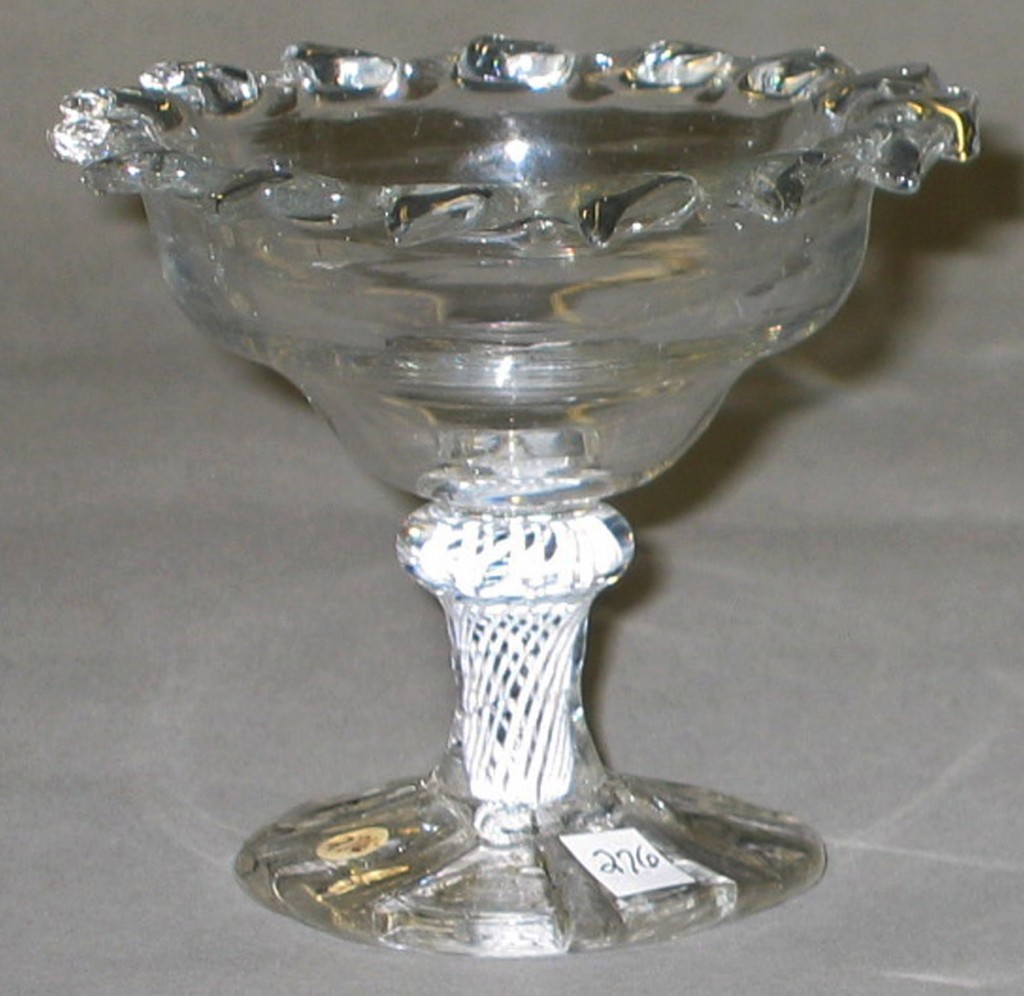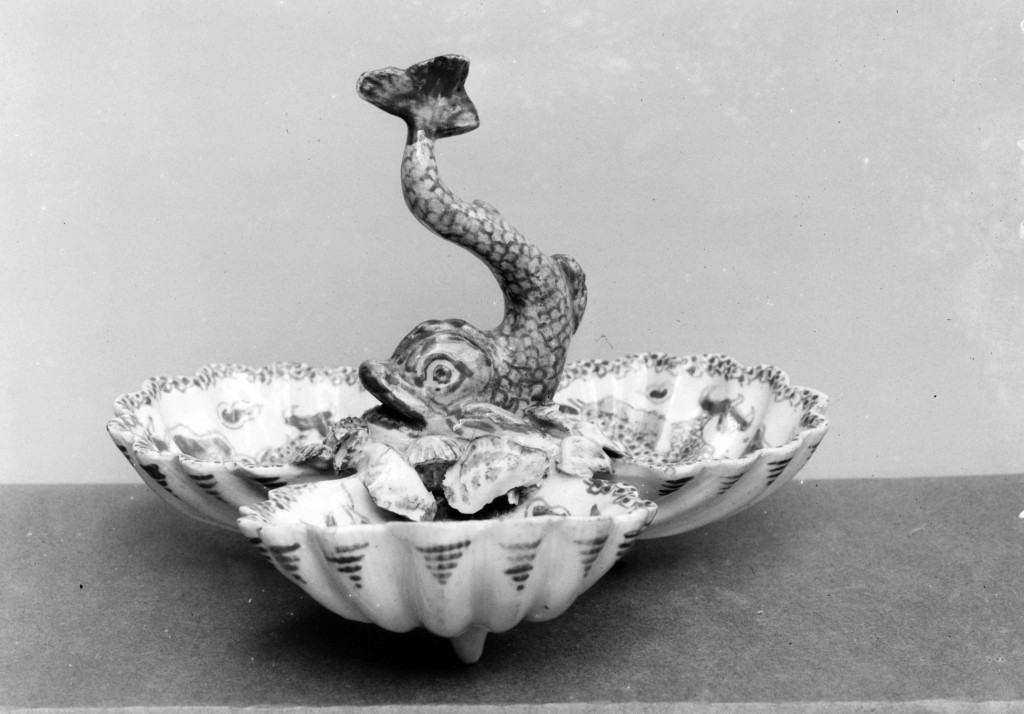In Sweet Succession: Vessels for the Preparation and Serving of Sweetmeats
Dessert courses, in 18th and early 19th century England and America, were looked upon as the culminating event of an evening dinner party, designed not only to whet the appetite, but to spark conversation.[i] An elegant “dessert supper” might be comprised of as many as twenty different dishes, and was seen as a test of creativity, cleverness and skill on the part of the hosting family.[ii] It follows that cooks and hostesses of the era spent considerable time preparing sweets,[iii] and that manufacturers devoted significant energies to crafting pretty vessels in which to display them. Winterthur’s collection holds many decorative wares to serve these purposes; a look at just three selections allows us to explore elements of preparation as well as presentation.
Sweetmeat glass
England, 1775-1780
Lead Glass
Winterthur 2006.0003.058, Gift of Dr. Thomas M. McMillan III
A variety of different contents may have filled the elegant bowl of this sweetmeat glass at different points in its lifetime. The form is fairly common, but the opaque twists in the stem and the dentate rim make for pretty ornamental additions that set the glass apart from plainer examples, and would have heightened its luminous qualities in a candlelit room. One role this object may have played is as the ultimate element atop a pyramid of glass stands, the preceding levels festooned with circles of jelly glasses and decorative flowers.

Sweetmeat or Pickle Dish
Jingdezhen, China, 1775-1785
Hard-paste porcelain with alkaline glaze
Winterthur 1956.0038.162, Gift of Henry Francis du Pont
Also appropriate to the dessert table were Chinese export porcelain sweetmeat dishes such as the one pictured here, likely used to serve dried fruits, nuts, or candies.[iv] Sweetmeats were an international fashion, with American hostesses sometimes purchasing imported goods from England and France.[v] Similarly, the dish in question represents an exchange of international ideas.[vi] The particular floral designs painted here have a distinct connection to Meissen traditions.[vii] The clustering of shell-form dishes around a central handle is also found in English examples from the Bow, Derby and Worcester factories (below).[viii] Chinese potters created such forms as a response to commissions from the West.
Sweetmeat Stand
Bow China Manufactory
London, England, 1750-1775
Soft-Paste Porcelain
Metropolitan Museum of Art 27.17.2, Rogers Fund
In order to create the delightful shapes, patterns and colors of the evening’s repast, numerous other vessels were required. Delicate and carefully executed, this mold illustrates the high level of attention paid to the various details of the table. Fitting charmingly into the hand, the mold contains a promise of the satisfying shape that it will eventually produce, once it has been filled with the ingredients for a jelly or blancmange, left to set, and turned out. Often jellies were conceived as part of an assemblage, and as a finishing touch, adorned with flowers, sprigs, and other decorative flourishes.[ix]

Jelly Mold
Staffordshire, England, 1745-1765
Salt-glazed stoneware
Winterthur 2003.0041.035, Gift in memory of Cecile and Phillip Ferland
By the mid 19th century, the market for highly elaborate dessert services was beginning to wane. In 1839, an American visitor to Germany described her surprise at the relatively spare table set before her at a dinner party, marking the onset of what would be known as the more restrained service à la russe.[x] But even by the end of the 19th century, “the tradition of lavishness was dying hard,”[xi] and the tradition of sweets was not dying at all. The term “sweetmeat” may have gone out of fashion, but this was hardly an indication that sugary treats were losing their popularity. As described in Wendy Woloson’s fascinating treatise on the democratization of sugar, over the course of the 19th century there was an extraordinary rise in American sugar consumption, multiplied by a factor of six from the 1790s to the 1870s.[xii] Even if the dessert course was losing its association with the overladen tables of the 18th century and before, Americans were establishing their own dessert traditions — from the ice cream parlor, to the soda fountain, to Valentine’s Day candy boxes, as chronicled by Woloson — laying the groundwork for a distinctly American sugar obsession that is with us to this day.[xiii]
By Emelie Gevalt, WPAMC, Class of 2017
Endnotes
[i] Louise Conway Belden, The Festive Tradition: Table Decoration and Desserts in America, 1650-1900 (Winterthur, DE: Henry Franics du Pont Winterthur Museum, 1983), 3; Helen McKearin, “Sweetmeats in Splendor: 18th Century Desserts and their Dressing Out,” The Magazine Antiques (March 1955) 218; Belden, The Festive Tradition, 157.
[ii] Belden, 19, 3-4.
[iii] Belden, 102.
[iv] Dishes like this one are also sometimes referred to as pickle dishes, and this was possibly an alternative, or additional, use for them.
[v] Wendy Woloson, Refined Tastes: Sugar, Confectionary, and Consumers in Nineteenth-Century America (Baltimore and London: The Johns Hopkins University Press, 2002), 1.
[vi] Clare Le Corbeiller and Alice Cooney Frelinghuysen. Chinese Export Porcelain (New York: The Metropolitan Musuem of Art, 2003), 28.The authors, point to this idea as characteristic of Chinese export porcelain: “By its nature, Chinese export porcelain is an artistic hybrid, subsuming ever-shifting balances between East and West as well as interactions within each culture.”
[vii] C.J.A. Jorg. Chinese export porcelain : Chine de Commande from the Royal Museums of Art and History in Brussels (Hong Kong : Urban Council, 1989), 222.
[viii] See for instance the Bow example at The Metropolitan Museum of Art http://www.metmuseum.org/art/collection#!?q=27.17.2&sortBy=Relevance&sortOrder=asc&page=1, accessed 29 February 2016; also the Worcester example at the Victoria and Albert Museum http://collections.vam.ac.uk/item/O183125/sweetmeat-stand-worcester-porcelain-factory/ accessed 29 February 2016.
[ix] Belden, 158. Tim Udall, “Glasses for the Dessert II — Eighteenth Century English Jelly and Syllabub Glasses.” The Glass Circle 5 (1986): 36.
[x] Cited in Belden, 33.
[xi] Belden, 36.
[xii] Wilson, Refined Tastes, 5.
[xiii] As discussed throughout Woloson’s book.



Leave a Reply